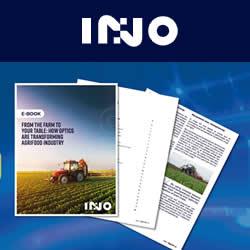Precision Agriculture Market Outlook
The global precision agriculture market is dominated by North America, with a CAGR of 18% from 2019 to 2025, followed by European and Asia Pacific regions.
Precision agriculture uses new advanced technologies to increase crop yield and profitability while lowering the overall use of traditional agricultural inputs such as land, water, herbicides, and pesticides. Various technologies using global positioning systems (GPS), geographic information systems (GIS), remote sensing, and variable rate technology are used in precision agriculture to collect crucial data for crop health such as soil nutrient, soil moisture, and weather forecast. Thus, by using such advanced devices, precision agriculture eliminates or reduces the need for farm labor. With the rising demand for food and declining natural resources, the demand for precision agriculture has been increasing at a global scale.
Make an Inquiry Now: https://www.marketsandmarkets.com/Enquiry_Before_BuyingNew.asp?id=265168900
Governments in various regions are encouraging the use of modern farming practices by sanctioning the budget, offering incentives, and providing guidance at various levels, with the aim of increasing food production. For instance, in 2017, the US government announced a budget of USD 1.9 million to its agricultural sector to encourage farmers to adopt new and advanced farming techniques. In 2015, the British government sanctioned USD 14 million to the Center of Agriculture Informatics and Metrics of Sustainability (AIMS) to enhance the efficiency, effectiveness, and sustainability of food production.
In the developing and developed countries, smartphones incorporated with multiple user-friendly applications (apps) are becoming popular among farmers. These apps provide not only external agriculture-specific information (such as weather and market prices details) but also farm data to crop growers, thereby helping them to effectively use the information to make better decisions. According to the Farm Journal Media Survey, in February 2015, more than 60% of the farmers worldwide used smartphones and tablets. The use of smartphones among farmers has been steadily increasing since 2009, and this is expected to grow extensively in the coming years. Additionally, labor costs account for nearly 60% of the total agriculture costs. With the use of various precision agriculture tools, including agriculture robots, the labor costs are projected to decrease in the coming years.
The key players in this market include Deere & Company (US), Trimble (US), AGCO Corporation (US), Adjunctions (US), Raven Industries (US), AG Leader Technology (US), Precision Planting (US), SST Development Group (US), Teejet Technologies (US), Topcon Positioning Systems (US), DICKEY-john (US), and CropMetrics (US). Technological innovations, expansions & investments, mergers & acquisitions, joint ventures, and partnerships were some of the core strengths of the leading players in the precision agriculture market. These strategies were adopted to diversify their businesses across various regions, strengthen their distribution networks, and enhance their product portfolios.
The leading players are also focusing on strengthening their R&D capabilities by investing in advanced technologies to offer diversified service portfolios. For instance, in January 2018, John Deere launched Intelligent Boom Control (IBC) for 1270G harvesters in North America. IBC provides operators with increased accuracy and productivity-enhancing harvester capabilities to a whole new level. In October 2017, AGCO partnered with The Climate Corporation (a subsidiary of Monsanto Company), which allows AGCO customers to connect with The Climate Corporation's FieldView platform to gain precise data for effective decision making.
For more details on this research Talk with our Expert Analyst: https://www.marketsandmarkets.com/speaktoanalystNew.asp?id=265168900
Featured Product

